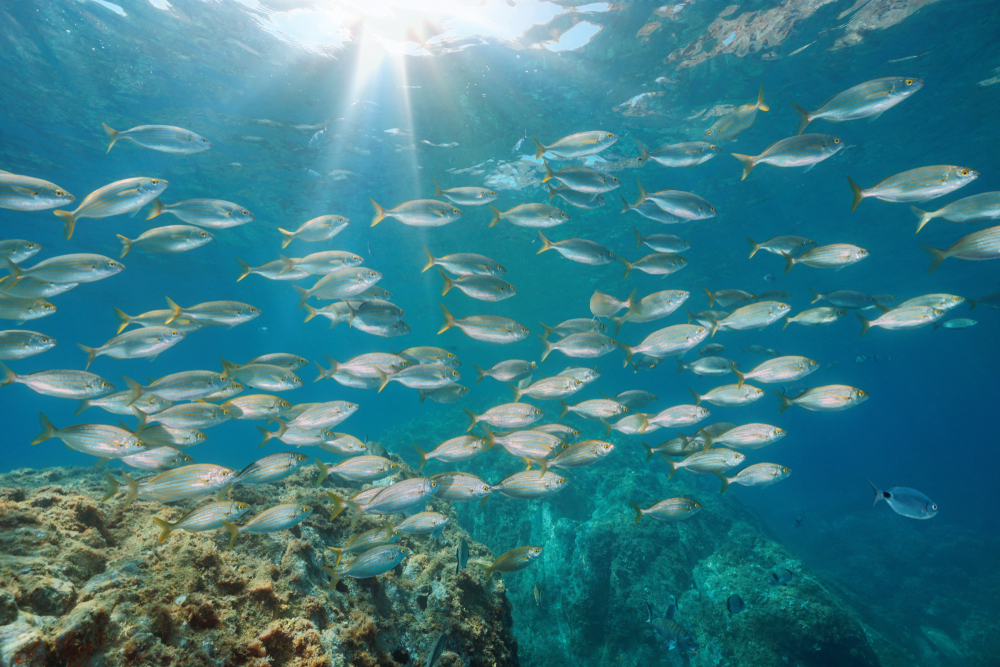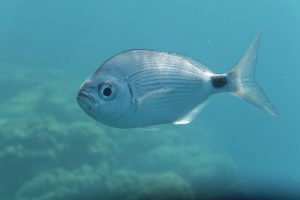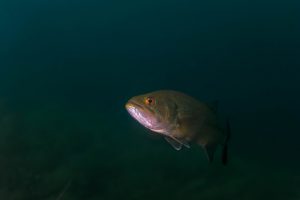Surrounded by the Atlantic Ocean and the Mediterranean Sea, Spain is well-known for its saltwater fishing options. This colorful country is also home to a wide variety of freshwater fish – they swim in the Spanish rivers, delighting anglers from Catalunya to Andalusia.
Many of Spain’s freshwater fish are anadromous, which means that they alternate between freshwater spawning locations and saltwater habitats. Less common are the catadromous fish, which spawn in saltwater.
Whether you’re exploring the lakes near the Costa Brava or fishing in the mountain streams near Andorra, these unique freshwater fish await.
Table of Contents
1. Alagon spined loach
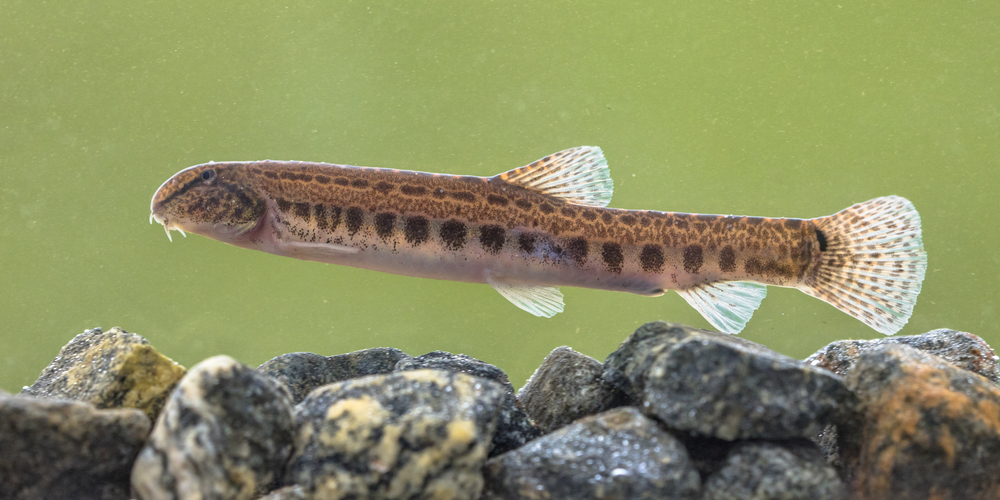
The Alagon spined loach is a freshwater fish that’s found mainly in Spain. In fact, before 2020, wildlife experts assumed it lived exclusively in Spain. That changed when a group of scientists found the fish in Portugal during a study of major drainages.
In Spain, the Alagon spined loach is classified as an endangered species. This is largely due to the fact that its natural habitat – rivers and streams – is threatened by construction and human impact.
This fish is also known by its scientific name, cobitis vettonica. Long and narrow, it features distinctive dark markings on a light gold or brown background.
2. Allis shad
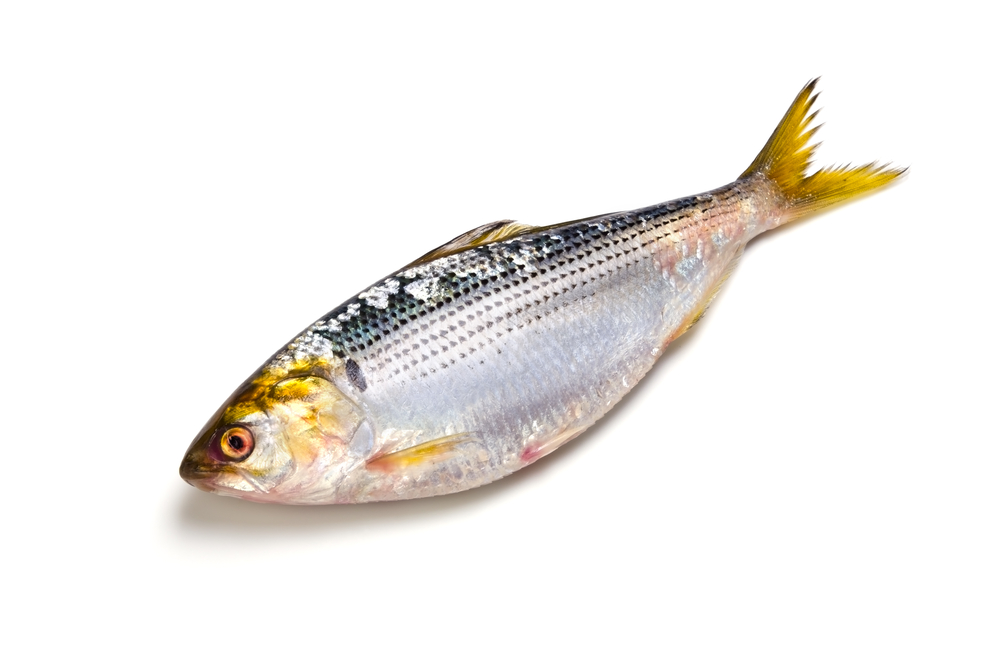
The allis shad is one of the most common freshwater fish in Spain. Interestingly, it’s not strictly found in fresh bodies of water; it lives mainly in the Atlantic Ocean but swims into streams or rivers when it’s ready to spawn. This usually happens after the fish reaches three years of age.
If you were to spot an allis shad in a lake or river in Spain, you might mistake it for a herring. The two silver-colored fish both feature long, rounded bodies. Look closer, and you’ll see that the allis shad has a line of dark-colored, rounded spots that run from the gill toward the tail.
Depending on the environment, some types of allis shad can grow up to 20 inches long and nearly 5 pounds in weight. It’s considerably larger than a similar species, the twaite shad.
3. Big-scale sand smelt

The big-scale sand smelt is one of Spain’s most versatile freshwater species. It’s a common part of Spanish seafood menus; chefs usually add breading and fry the fish whole. Other people use the smelt as bait for larger fish.
Reaching a maximum length of 8 inches, this tiny fish tends to live in shallow bodies of water. In Spain, it tends to live in the lagoons and estuaries near the coast. You’ll find big-scale sand smelt in areas that are hostile to other fish, including areas with high salt concentrations.
With its long, delicate body, this little fish is hard to spot in the water. It uses two dorsal fins to dart around weeds and underwater obstructions. To survive, the smelt eats both plants and tiny crustaceans.
4. Bleak
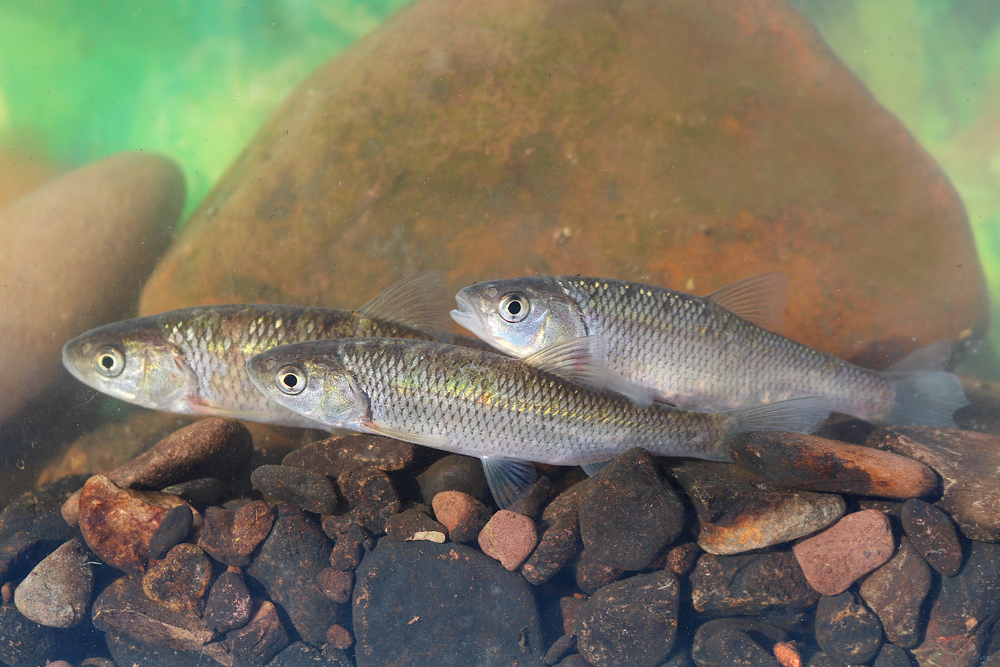
The bleak, which is also called the common bleak, is a small fish that lives in rivers and lakes in Spain. It’s also found throughout Europe. Since it travels in large schools for safety, this fish tends to prefer spacious, open bodies of water.
Anglers in Spain use the bleak as bait. This is most common when the fish is young as full-size bleak can reach 10 inches long.
Covered in bright, silver-colored scales, the bleak resembles fish species including the bream and roach. It usually has a long body and big eyes. Around the head, you’ll find beautiful pearlescent tones.
5. Catalonian barbel
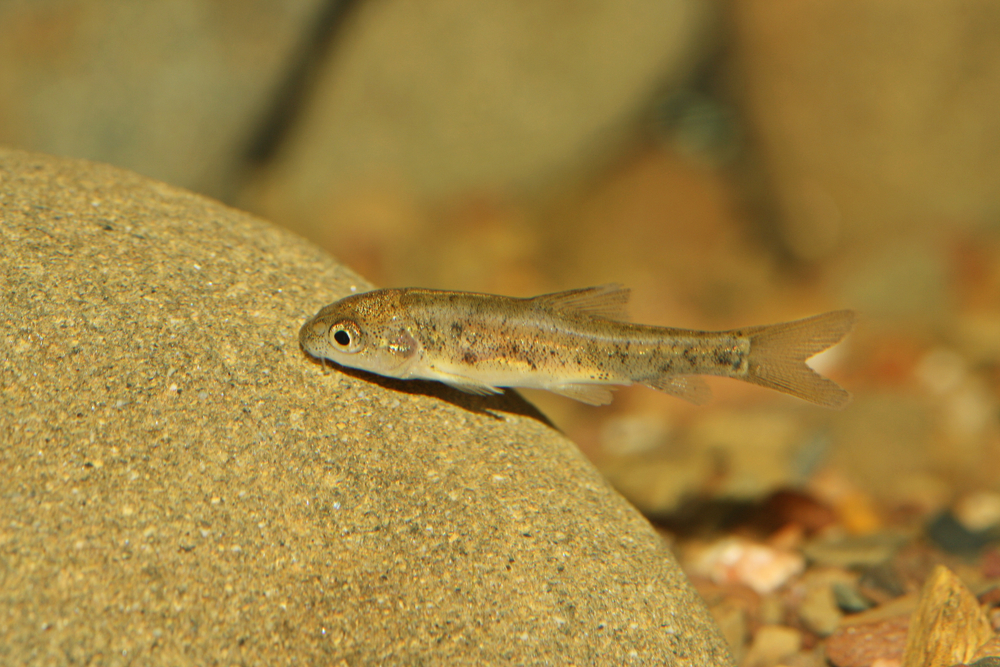
Freshwater anglers in Spain rarely catch the Catalonian barbel. This rare fish has an extremely limited habitat; it lives in rivers in Catalunya, Aragon, and parts of Navarra.
The Catalonian barbel is a vulnerable species. Its freshwater habitat is constantly shrinking. At the same time, it’s hunted by invasive fish from other parts of the world, including the catfish and a type of North American sunfish.
This fish is small and flat, with a brown and white color scheme that helps it blend in on river bottoms. Most types grow to just over 7 inches long.
6. Chameleon cichlid

The chameleon cichlid is a compact fish that can survive in practically any freshwater area, including swamps and shallow creeks. It’s not native to Spain; it’s a South American fish that was introduced to Spanish waters.
You’ll know a Chameleon cichlid when you see it – each one has a large dorsal fin that runs nearly the full length of its spine. Tiger-stripe markings add to the fish’s distinctive look. Since this species rarely gets bigger than 6 inches, its bold markings are particularly striking.
When the chameleon cichlid spawns, it tends to prefer hard surfaces in an open area. During spawning, the fish travel in pairs to protect the eggs for up to three weeks.
7. Colmilleja
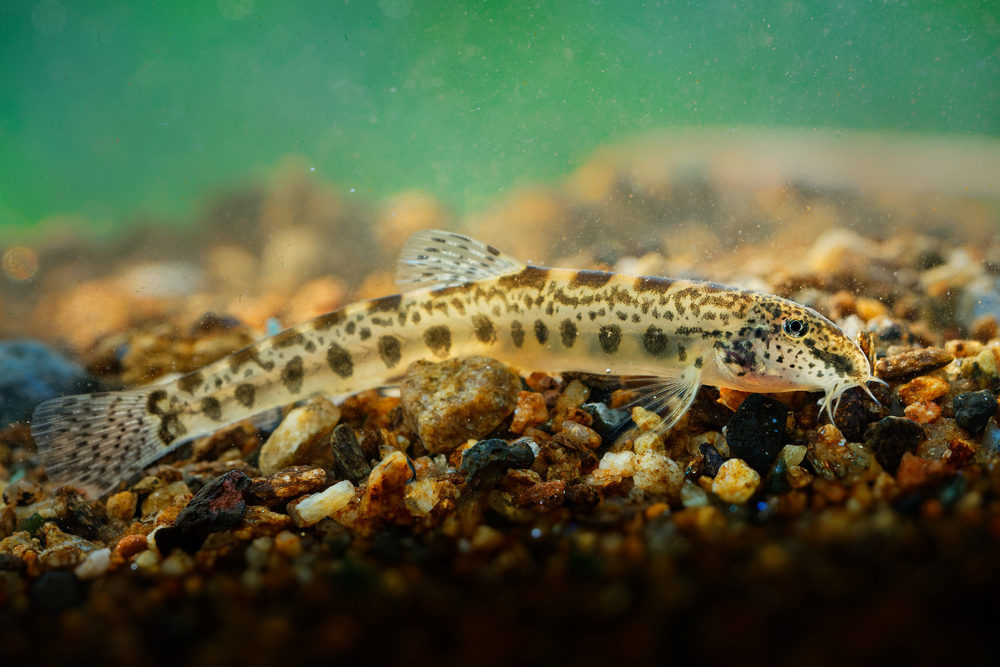
The colmilleja, or the cobitis paludica, is a fish that lives only in Spain and Portugal. It prefers rivers and is rarely found in lakes or swamps. You’ll usually come across this fish in the southern half of Spain.
Although the colmilleja usually grows to just 5 inches long, it has an eye-catching appearance. The body is long and slim with many different fins. Four rows of dark dots run horizontally across the fish’s body, and a barb near the eye provides extra protection.
The colmilleja is a vulnerable freshwater fish species. In addition to threats to its habitat, this small fish is popular among predators such as bass and catfish. It’s also vulnerable to non-native fish that have been introduced to rivers in the Iberian Peninsula.
8. Common carp
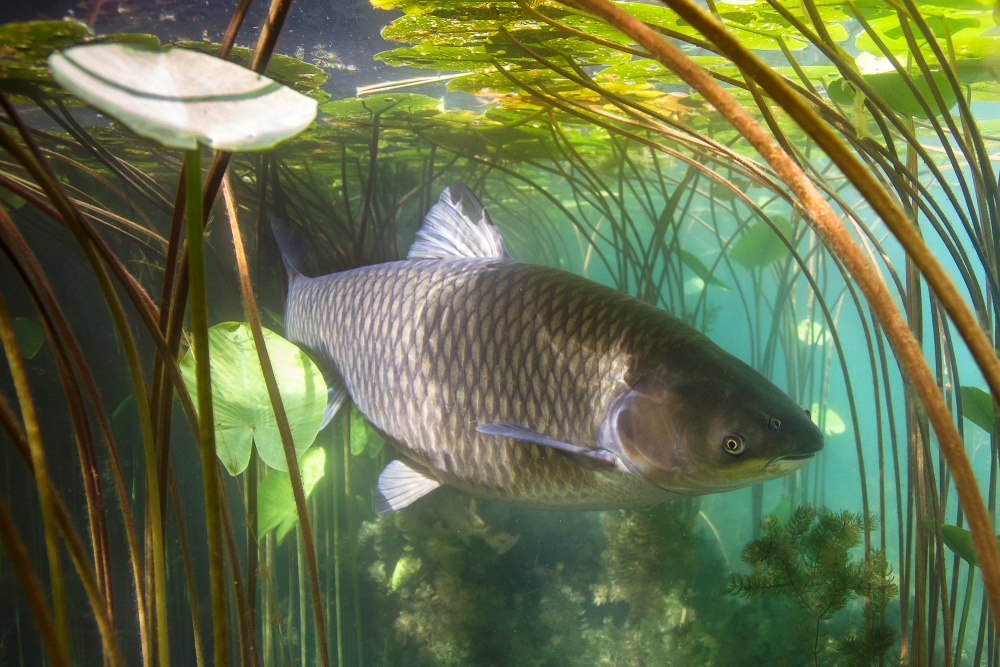
Common carp come in both wild and domesticated forms. Both fish have high-contrast gray and white scales, but wild versions are slightly shorter and less rounded. They live in rivers, streams, and lakes in Spain and across the world.
You may see the common carp referred to as an invasive species. That’s because it’s an exceptionally hardy fish. When it reaches a new environment, the carp tend to reproduce quickly and disturb the local vegetation.
In different parts of Spain, the common carp may be small or large. It’s not uncommon for a carp to reach 10 inches and 30 pounds; the hardiest fish can grow to nearly 100 pounds.
9. Crucian carp
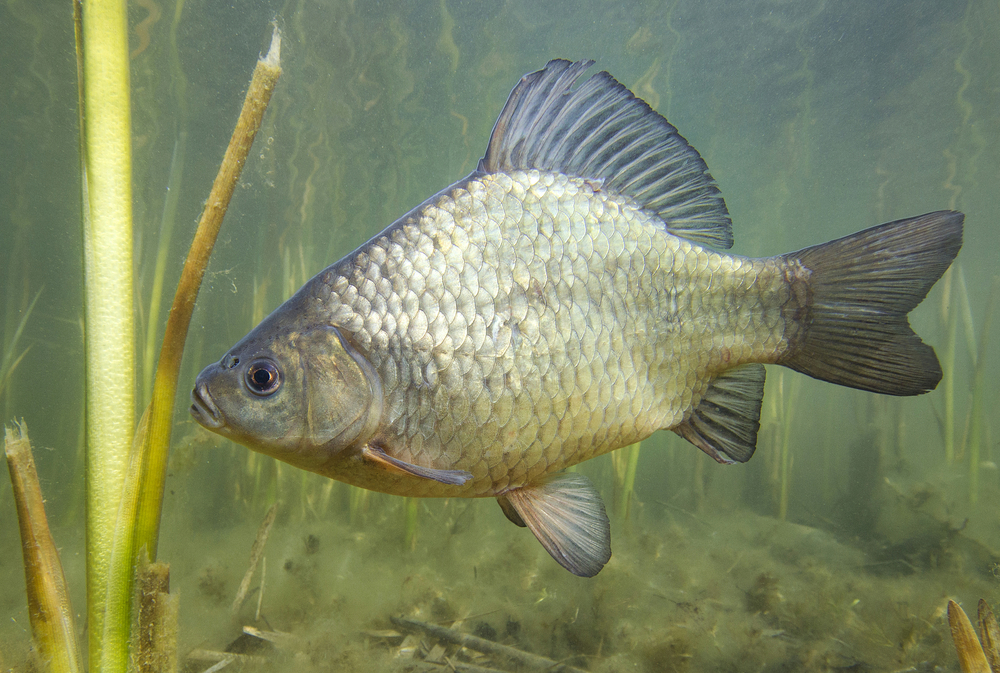
If you’re fishing in a low-flow river in Spain, you may reel in a crucian carp. This fish prefers water with little to no current; it likes lakes, ponds, and slow rivers. Most types max out between 6 and 15 inches long.
The crucian carp features a rounded body with a long dorsal fin and a broad tail fin. Yellow-green scales provide a comfortable amount of camouflage among submerged weeds. In some parts of Spain, the fish grow to be very thick as a defense mechanism against larger predators.
This type of carp is well-known for its adaptability. It tolerates low oxygen levels and extremely cold temperatures. That means that the fish often survive easily through the winter in the coldest regions of Spain.
10. European eel
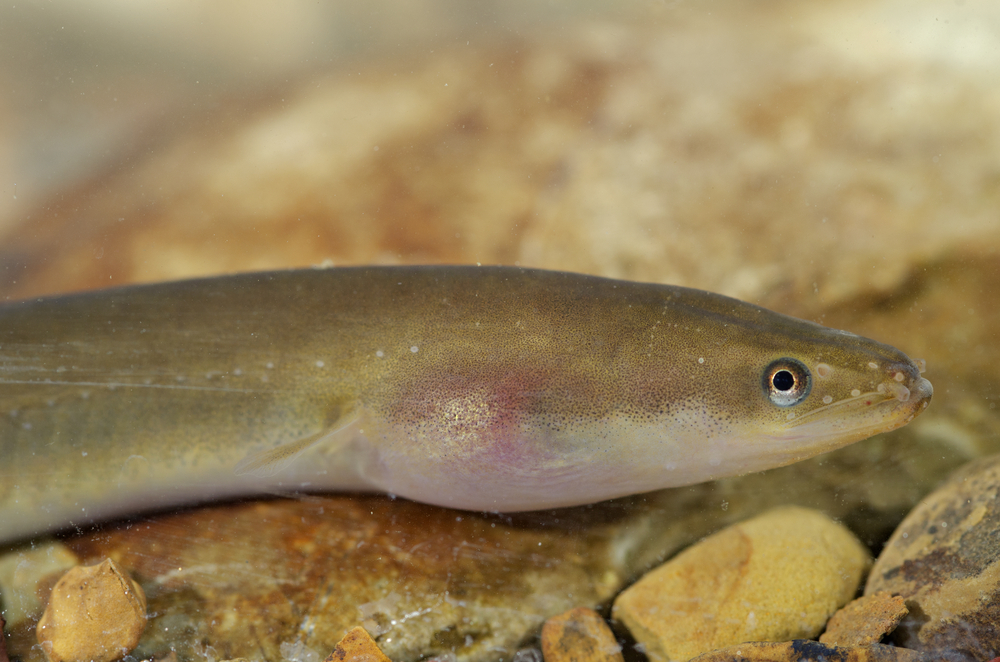
The European eel is native to Spain, but it may not be around for much longer; it’s consistently on the endangered species list. In fact, the population is so low that this fish is critically endangered.
This type of eel can survive in both saltwater and freshwater. Its life starts in the ocean, but it soon swims into fresh lakes and rivers. Thick, adaptable skin enables these eels to handle the change of environments.
A European eel looks like a hybrid between a snake and a fish. Its long, narrow body features a fin that runs from the head to the tail. The average length is about 3 feet, but some eels reach 4 feet or more.
11. European perch
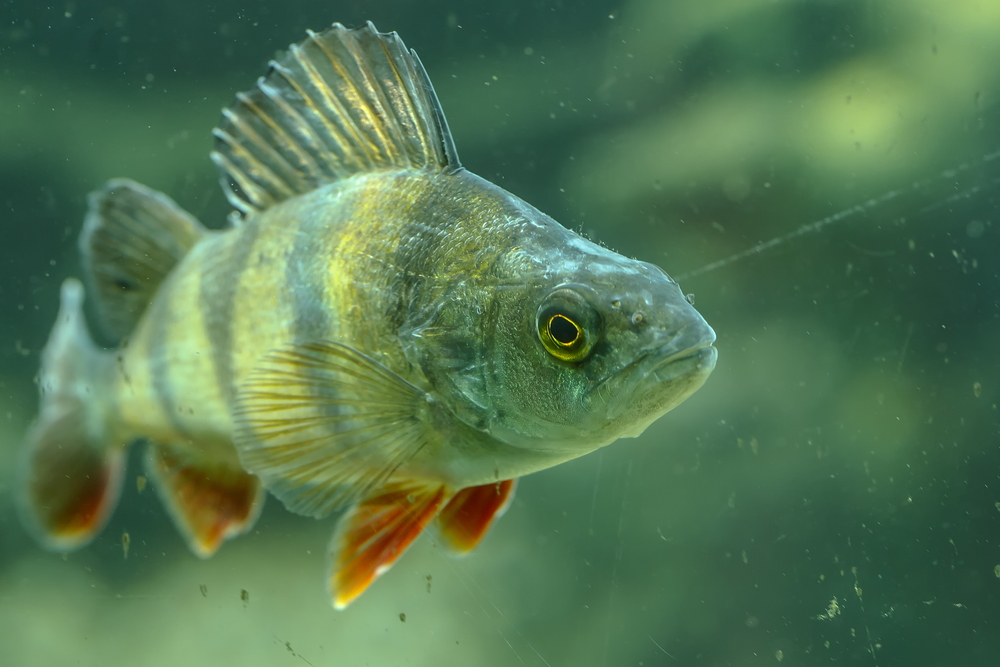
With its green body and red fins, the European perch is easy to spot as it swims through the lakes and rivers of Spain. This fish is found all around Spain; it’s also common in Russia and the rest of Europe.
Although the European perch seems like a mild-mannered fish, it’s actually a highly-skilled carnivore. It eats other types of fish that swim in low-current bodies of water.
If you’re interested in fishing for European perch, stick to warm, shallow areas. This fish likes sunlight and dislikes cold. It’s edible, but most anglers prefer to use it as bait for bigger fish.
12.European sea sturgeon
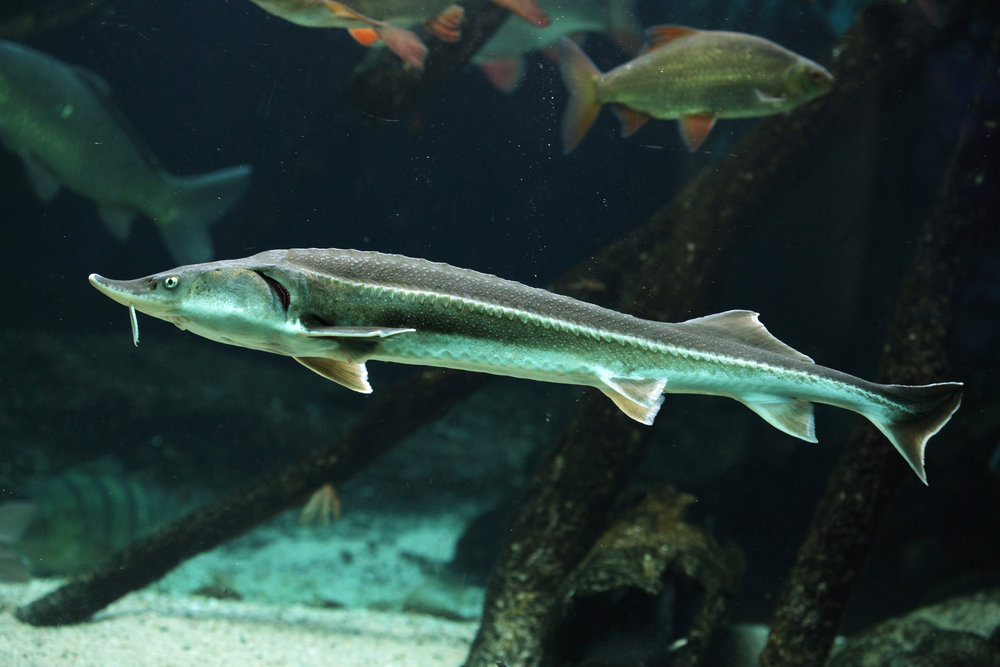
The European sea sturgeon is one of the largest freshwater fish in Spain. They’re usually about 4 feet long, but if you’re lucky, you’ll spot one that’s between 10 and 20 feet long. This is unlikely – in Europe, these enormous creatures are rare and critically endangered.
This species migrated to Spain from its native France. Most prefer to spend their lives in saltwater, coming into freshwater rivers primarily to spawn. Wildlife departments are working on projects to expand and protect the limited population.
The European sea sturgeon has a particularly eye-catching profile. Its body is long and powerful, with rows of strong plates. The sturgeon’s head is pointed, giving it a predatory look.
13. European sea bass
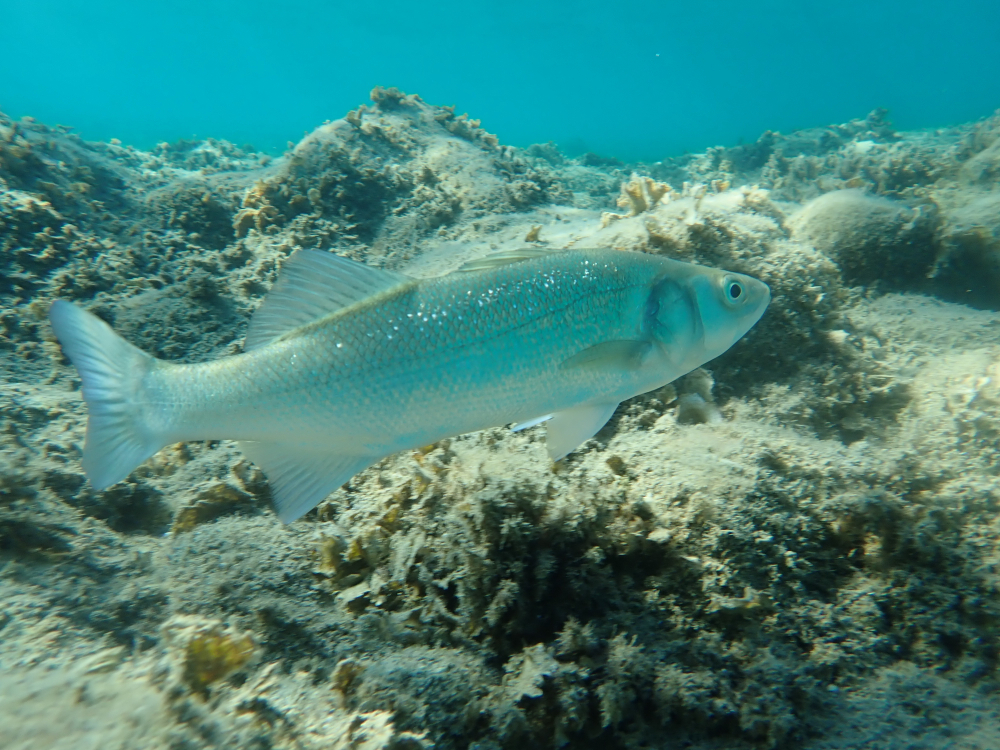
The European sea bass, which is also called the European bass, is a non-endangered fish that populates the oceans and freshwater rivers of Spain. This species is most common on the southern shore of the country; it prefers the shallow waters near the coast.
Unlike many of Spain’s freshwater fish, the European sea bass is popular for eating. It’s a regular fixture on restaurant menus on the Costa Brava and across the country. Most of these fish are farm-raised; it’s considerably harder to catch wild sea bass.
These sea bass tend to travel in schools when they’re young, branching out on their own when they reach maturity. Most fish average about 2–3 feet long and 10–20 pounds in weight.
14. Freshwater blennie
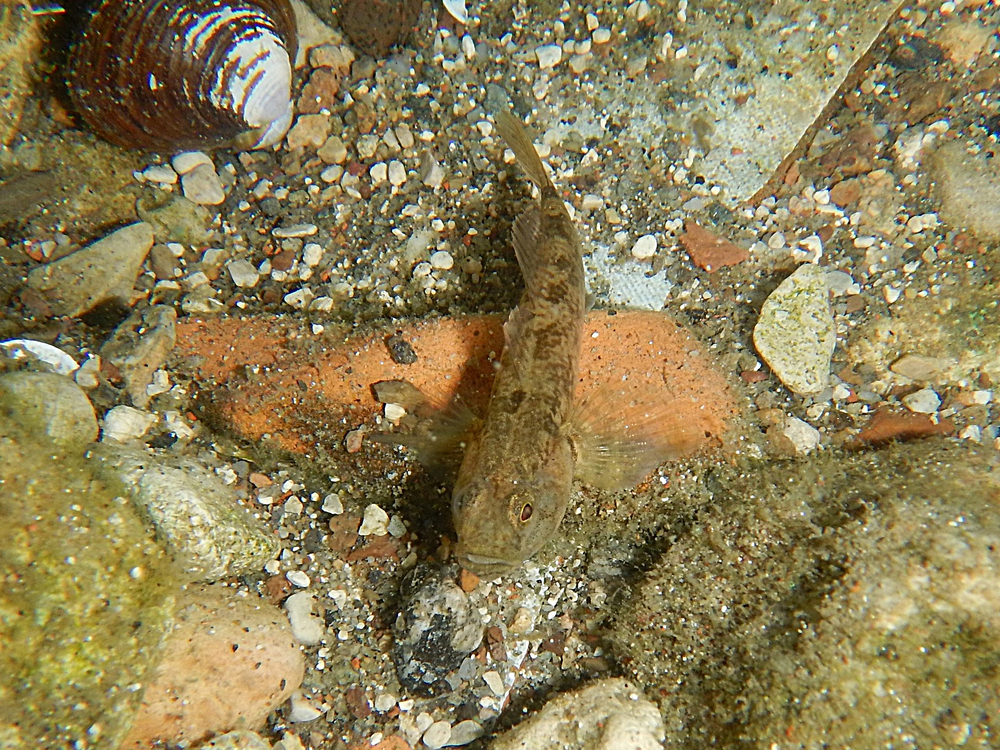
Found in shallow water throughout Spain, the freshwater blennie is a native species. Small and narrow, this little fish tends to hang out on the bottom of streams and rivers. It also lives in the water near the shores of lakes.
The freshwater blennie tends to live for about 5 years. During that time, it eats insects and other small water creatures. Females can spawn more than 1,000 eggs in one sitting, though that number is usually closer to 200.
Spain isn’t the only place you can find this fish; it’s also common in the south in Morocco and Algeria. Italy, France, Greece, and Montenegro are also home to sizable blennie populations.
15. Freshwater bream
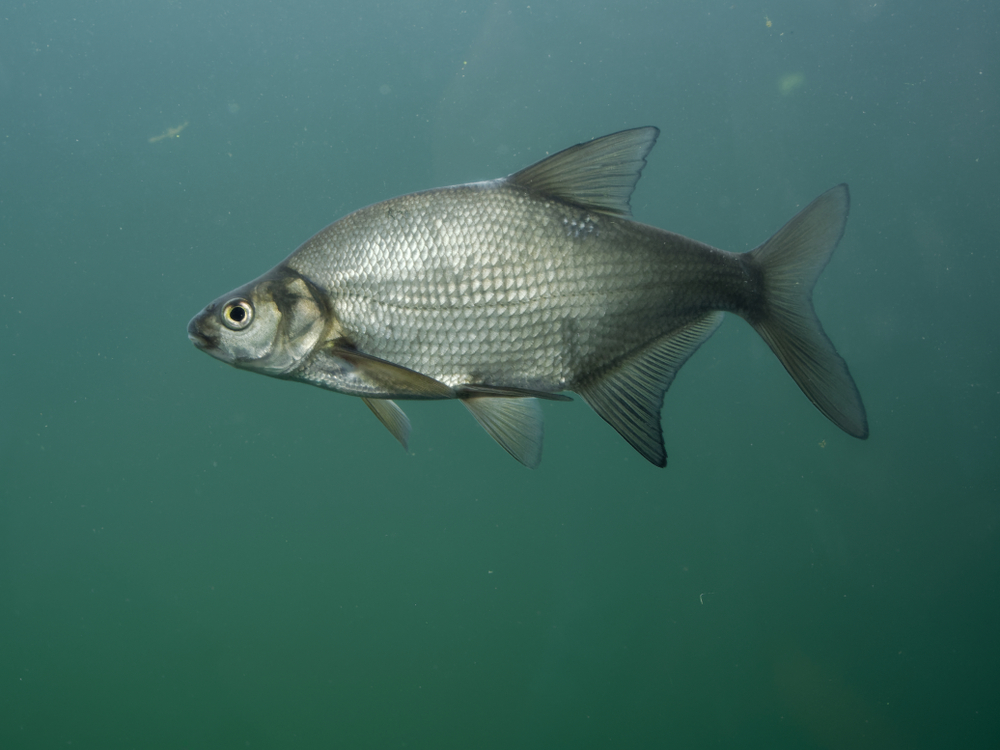
The freshwater bream is one of the more elusive freshwater fish in Spain. It’s typically found further north and in areas such as the Balkans.
When you do see this medium-sized fish, it’s usually swimming in water with a low flow rate. Lakes and ponds are two of the fish’s preferred habitats, though it also lives in slow rivers.
Boasting a flat, rounded body and a large, V-shaped tail fin, this fish is often mistaken for the sunfish or the silver bream. There’s an easy way to tell the bream apart – its fins are dark gray or black, creating a bold contrast with its scales.
16. Goldfish

Goldfish aren’t only pets – they’re actually a relative of the common carp. They’ve been in Spain since the 1600s; you’ll usually find them in lakes and ponds.
A wild goldfish doesn’t look like its domesticated brothers and sisters. This type of fish tends to grow according to the size of its body of water. In some cases, they can grow up to 5 pounds or more.
Since they don’t have teeth, these unique fish use their throats to process food. They tend to destroy their outdoor environments by swimming near the bottom, kicking up sediment, and eating everything in sight.
17. Jarabugo
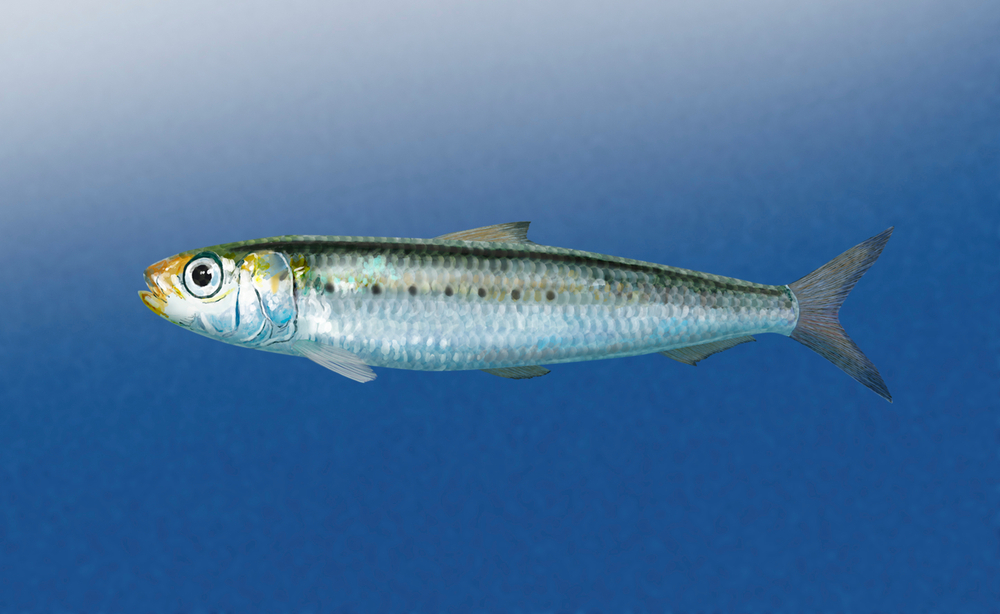
The jarabugo, or the anaecypris hispanica, is an endangered species. That’s partially due to its demanding needs: lots of oxygen, shallow depths, and warm water. Native to the Iberian Peninsula, this fish is most commonly found near the southern coasts of both Portugal and Spain.
Measuring less than 2.5 inches in length, the jarabugo is tiny. It’s notable for its large dorsal fin, which sits near the center of the fish’s spine. Gold scales cover the body, accented with small black dots.
18. Lamprehuela
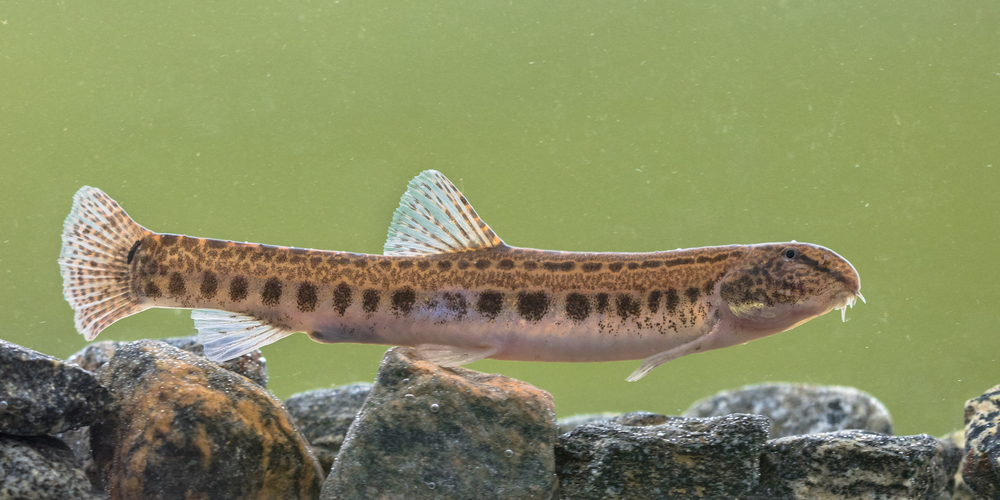
The lamprehuela might be small – it rarely gets longer than 3 inches – but it’s also distinctive. This fish has a gold body accented with bold, dark-brown spots. This striking color combination gives this fish a wild, tiger-like appearance.
This fish uses three sets of barbels to taste. It sticks to the bottom of the river, eating a variety of minuscule crustaceans as it swims.
An endemic species in Spain, the lamprehuela is usually found in the Duero River or the Ebro River. These tiny fish have also been discovered in a few other river basins across the peninsula.
19. Largemouth black bass
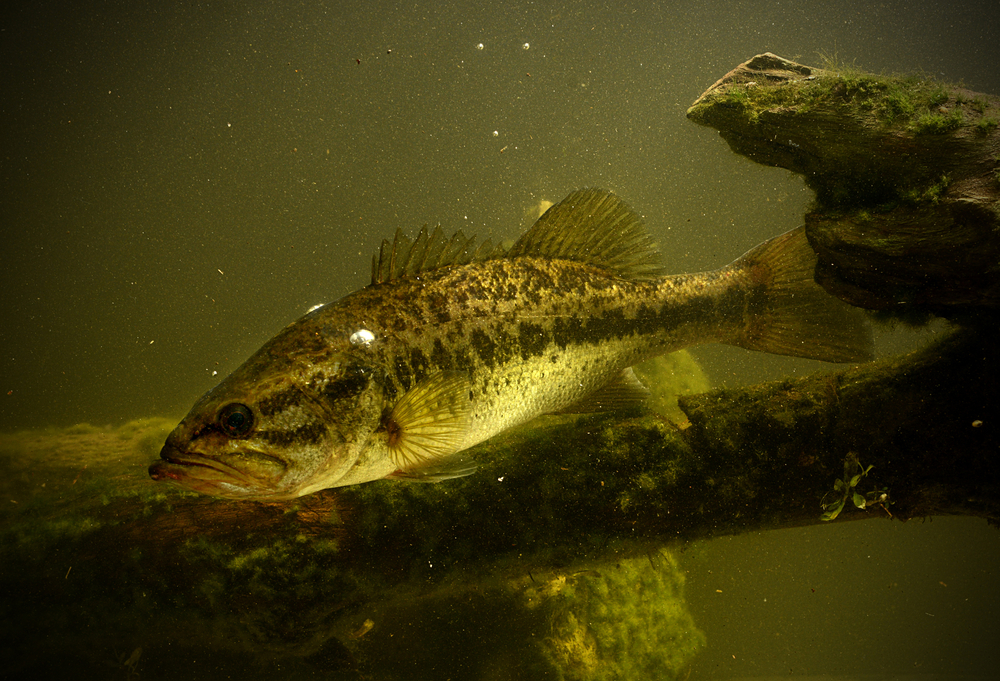
Anglers across Spain are familiar with the largemouth black bass. This common fish exists in great quantities, making it a popular species for game fishing. Despite its name, this type of bass can be green, gray, or black.
Growing to an impressive 30 inches and 25 pounds, the black largemouth bass is one of the larger freshwater fish in Spain. Females tend to be considerably larger than males. The actual size of wild largemouth bass depends on the water; lots of weeds usually means smaller fish.
The largemouth black bass is a notable predator, feeding on a range of smaller fish. They can live to be 16 years old, and they spawn every year. In some parts of the world, these fish are considered an invasive species.
20. Mediterranean barbel
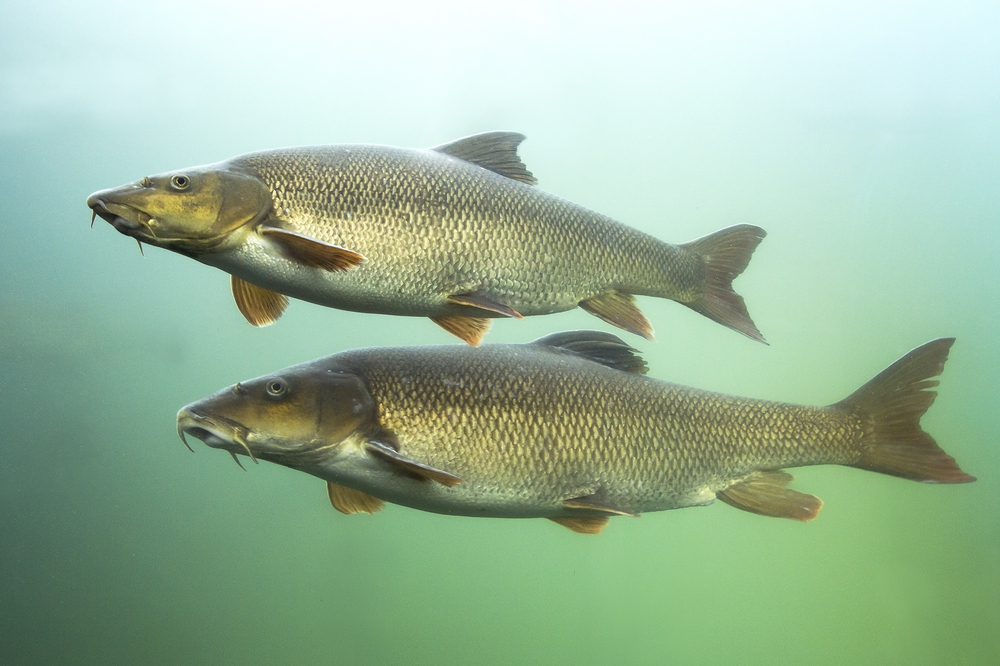
Of all the freshwater fish in Spain, the Mediterranean barbel is one of the most sought after. When it’s cooked, this fish offers an exceptional taste and a light, flaky texture. As a result, Spanish anglers seek it out constantly in the rivers near Barcelona.
If you want to try your luck, search for rivers with fast-flowing water. This type of fish needs plenty of oxygen, so it’s usually found in crystal-clear sections near the top of a stream. When caught, the Mediterranean barbel puts up a powerful, exciting fight.
Gold and silver scales cover the body of this fish. The dorsal and tail fins are covered in noticeable dark spots. Because of heavy fishing and the loss of its favorite habitat, this fish is close to achieving “threatened” status.
21. Pike-perch

If you’ve ever been fishing in Spain’s lakes and rivers, you’ve probably heard of the pike-perch, or zander. It’s fast, smart, and it fights when you reel it in. Anglers come from around Europe to catch this elusive fish, though it’s also found around the continent and in Asia.
At its biggest, the pike-perch weighs up to 6 pounds and measures about 26 inches long. It prefers to stay in big lakes and rivers where there’s plenty of room to swim. With its large eyes, this fish also tolerates dark, murky water.
The pike-perch is a carnivore; it uses its high-strength jaws to eat practically any smaller fish. Usually, this fish stays out of the way of other pikes to avoid competing for food.
22. Pumpkinseed
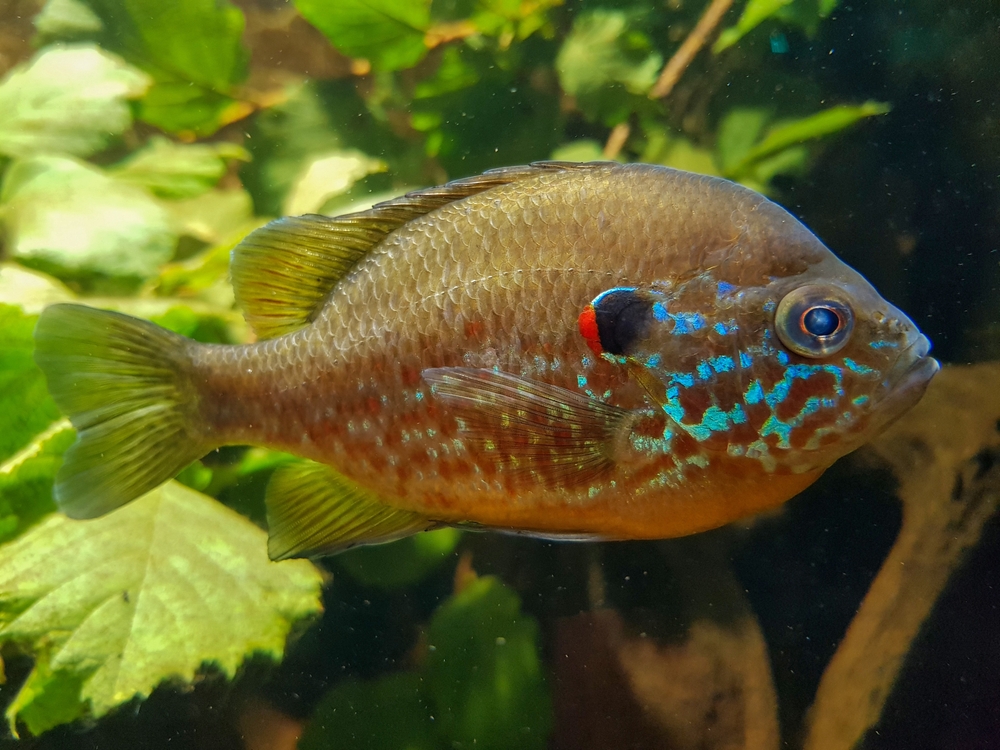
The pumpkinseed fish is aptly named – it has a rounded body that’s vaguely the shape of a pumpkin seed. You might also see this fish called a sunfish or a punkie. Because pumpkinseed fish are easy to catch, they’re popular with young anglers.
In Spain, the pumpkinseed isn’t a native fish; in fact, it’s usually considered invasive because it tends to beat out local fish when it comes to hunting insects and crustaceans. This type of fish prefers warm, clear water with lots of places to hide.
Most pumpkinseed fish are small, growing to about 4 inches long. They feature blue and green bodies and a bold spotted pattern. Some types have bold, vibrant scales that look almost tropical.
23. Rock goby

Peek into a rocky pool in Spain and look closely – you might spot a rock goby at the bottom. These tiny fish feature spotted coloring that blends into the rocks at the bottom of streams, rivers, and lakes. In fact, they use their unique fins to hold onto the hard surface and resist the current.
These curious little fish are also expert chameleons. They can adjust the color of their body, particularly after spawning. Female rock gobies lay thousands of eggs, which the male then protects.
Although the rock goby prefers saltwater, it sometimes migrates from the ocean and swims up into Spain’s freshwater rivers. In most cases, it stocks to water that’s less than 50 feet deep.
24. Sarda
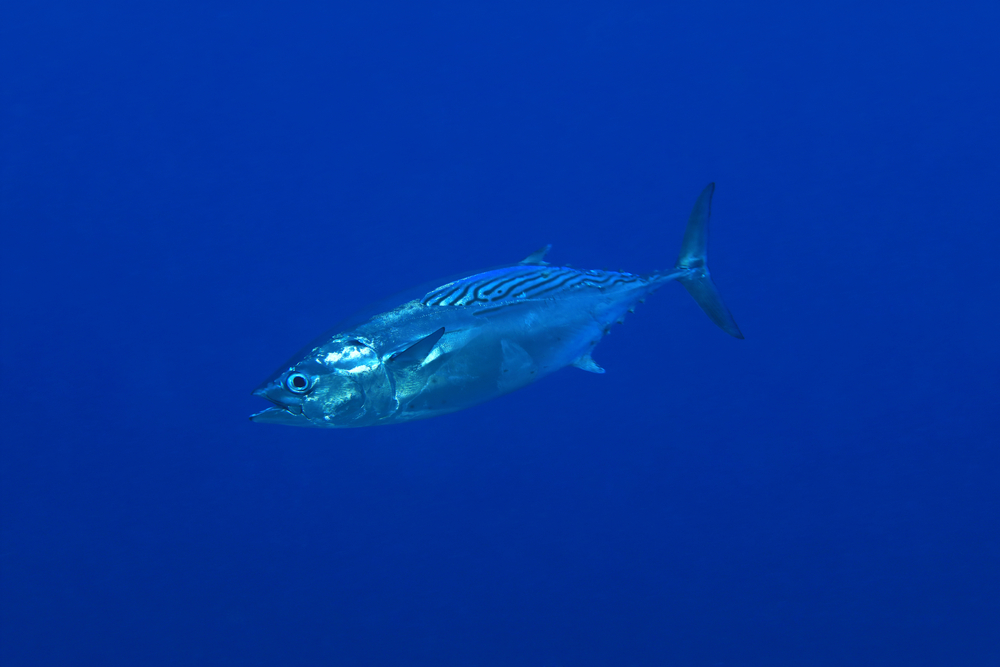
The sarda is a popular game fish in Spain. Anglers enjoy reeling in the large, powerful fish, and diners love its hearty texture and light flavor.
Within the sarda family, you’ll find a variety of subspecies. The most common is the Atlantic bonito, which is commonly found in the coastal waters of Spain and the Azores. It’s popular with commercial fishermen because it swims in enormous schools.
The sarda is an eye-catching fish, thanks to the diagonal stripes that decorate both sides. The two dorsal fins are set close together on the fish’s spine, and the tail fin comes to two sharp points.
25. Sekavec dvoupruhý
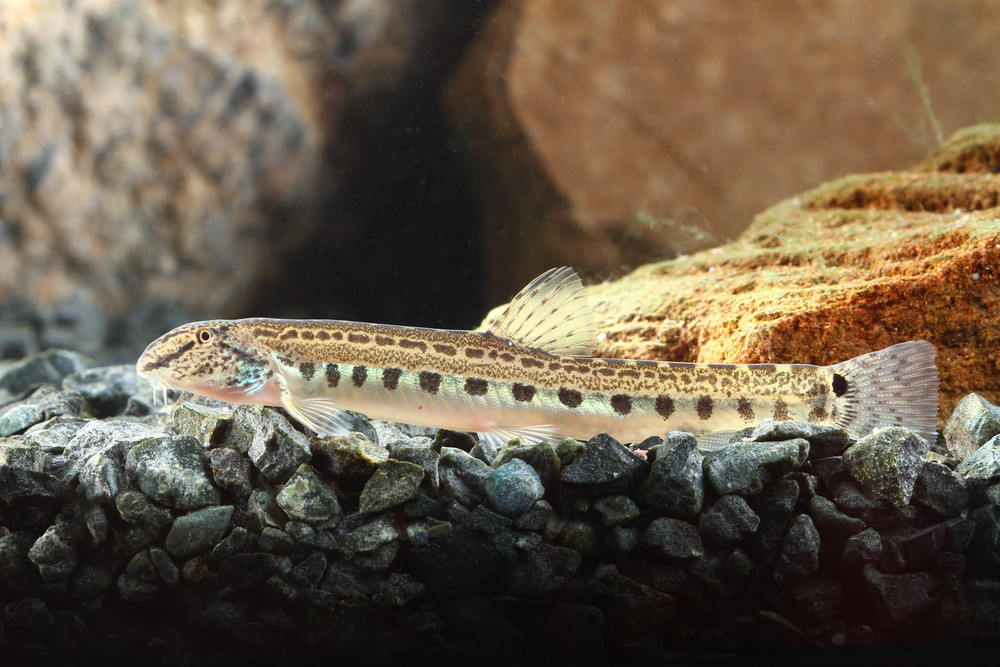
You might recognize the sekavec dvoupruhý by its less poetic name: the spined loach. This diminutive fish is found in rivers, ponds, and lakes across Europe; in Spain, it’s most common in the northeastern parts of the country.
The spined loach is a very small fish, usually topping out at 3.5-4 inches long. Its body is light-colored, with rows of dark brown dots that run the length of the spine. This coloring helps camouflage the fish in its natural environment.
Most sekavec dvoupruhý prefer slow-moving water. They need lots of oxygen and prefer to stay away from brackish areas. As a result, you’re most likely to see them in creeks and small ponds with sandy bottoms.
26. Siberian sturgeon
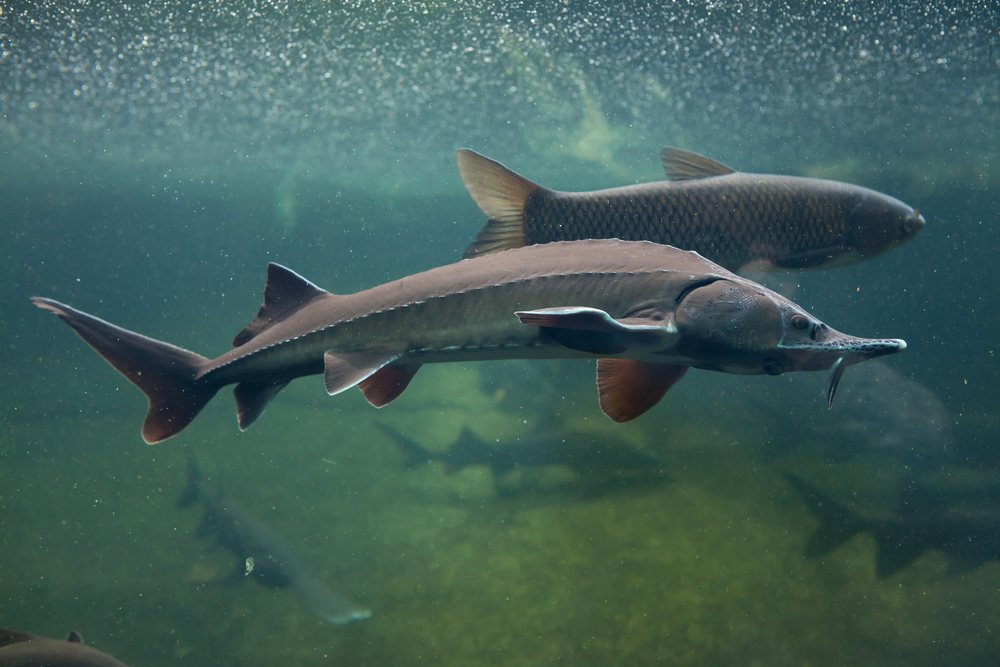
The Siberian sturgeon is another common type of freshwater sturgeon in Spain. Though it’s native to Russia, this sizable fish is known for its ability to swim long distances. Over the years, it’s traveled across the continent and into the rivers of Spain and France.
Spanish anglers are always on the lookout for this enormous fish. On average, it weighs about 150 pounds; the largest of its kind has weighed in at a remarkable 450 pounds. Each fish can live for more than 50 years.
Although this type of fish prefers to stay out of sight, it’s impossible to miss. With its bluish-gray color and pointed head, it looks almost like a prehistoric creature.
27. Iberian gudgeon
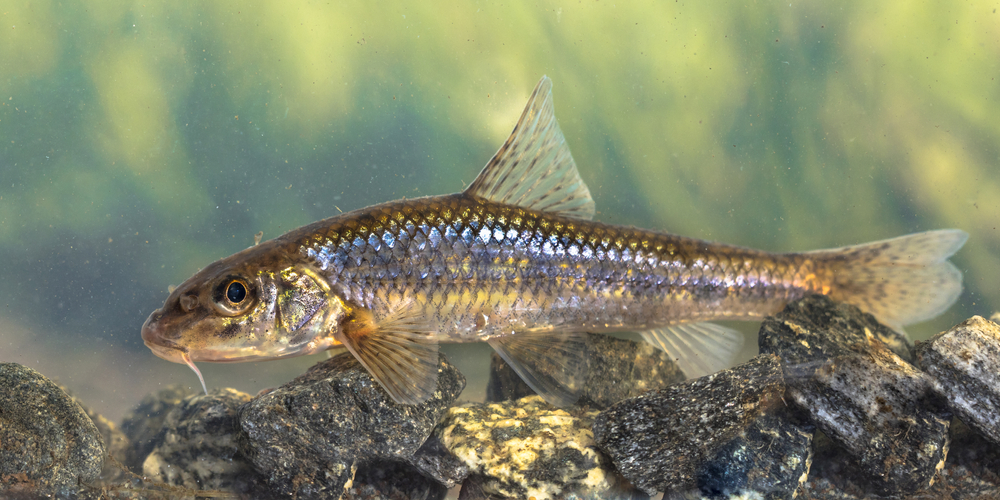
As you might guess from its name, the Iberian gudgeon is a common fish on the Iberian Peninsula. It’s found all around Spain and prefers to stick to the drainage areas of major rivers.
This unique little fish is quite small; most of its kind grow to 5 inches or less. As a result, it’s not popular for fishing. Instead, these tiny creatures are more likely to be prey for larger, carnivorous fish.
Despite its size, the Iberian gudgeon has bold markings. Its body is usually gold or orange, with patches of black scales. Each of its fins is covered in dark black dots.
28. Twaite shad
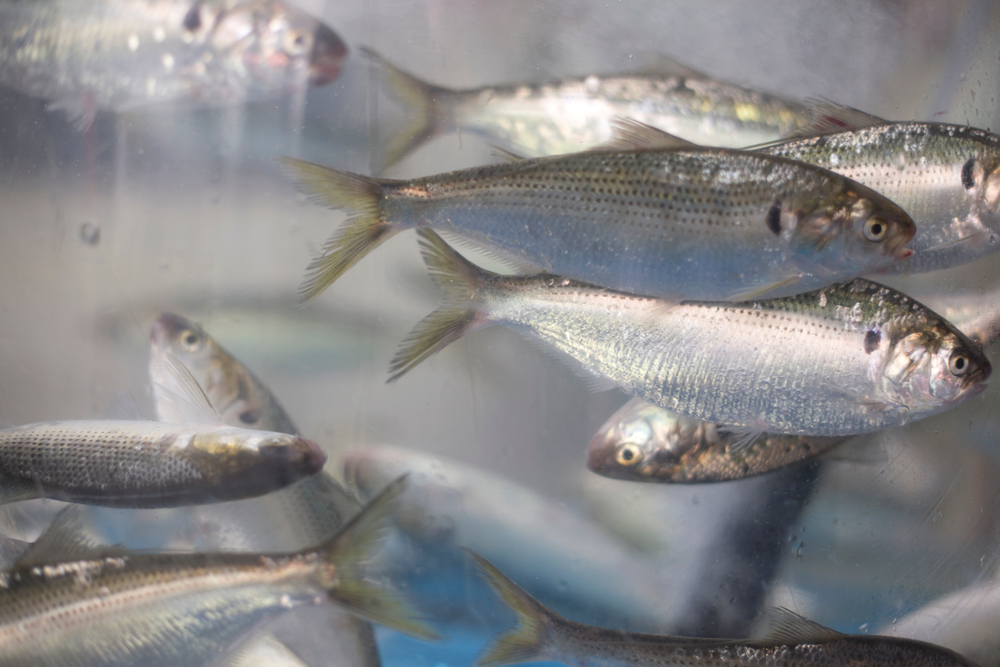
When viewed from the side, the twaite shad’s unique profile becomes clear. This fish has a gently sloping spine and a wide, rounded underside. As it swims, its iridescent silver scales create a rainbow effect.
The twaite shad is a common fish in Spain; it’s found in the coastal waters. However, at spawning time, this fish swims up freshwater rivers to drop its eggs. In some cases, shad that become trapped in freshwater can survive without problems.
Most mature twaite shad grow to an average of 13 inches long. They feed on plankton as juveniles, graduating to tiny fish as they age.
29. Weatherfish
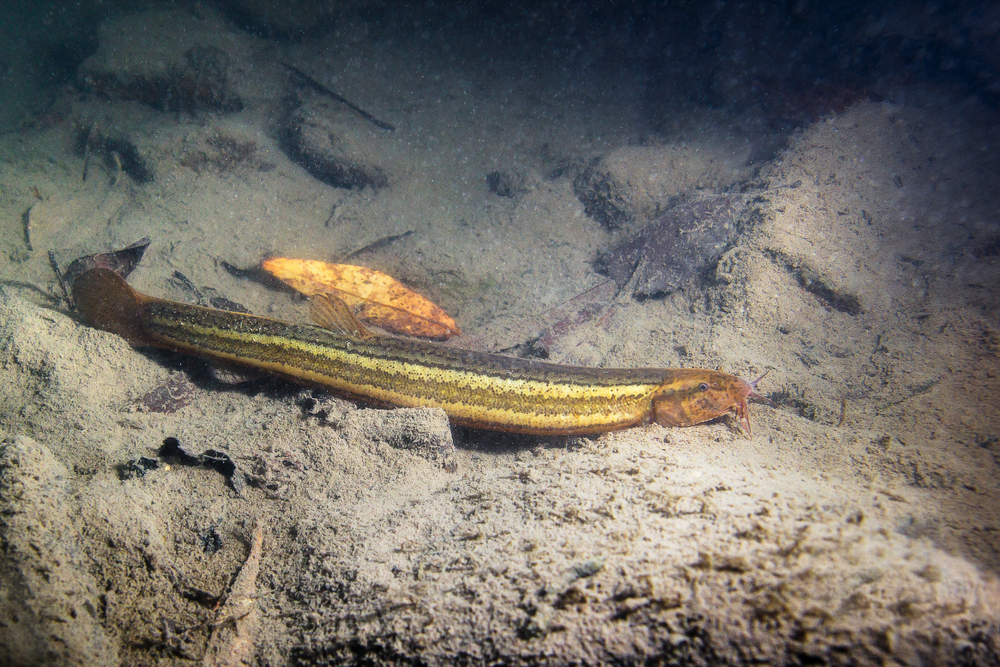
Chances are, you’ll never see a weatherfish – these small scavengers stay close to the bottom of streams, often sticking to areas with lots of plants and weeds. As they swim, they search for tiny creatures to eat. Since the weatherfish is exceptionally narrow, it’s able to dig itself into the loose sand when danger arises.
This fish lives in Spanish rivers and doesn’t mind dark water. It has the unique ability to take in oxygen from the air. When the water doesn’t have enough, the fish simply rise above the water line to breathe.
30. White bream
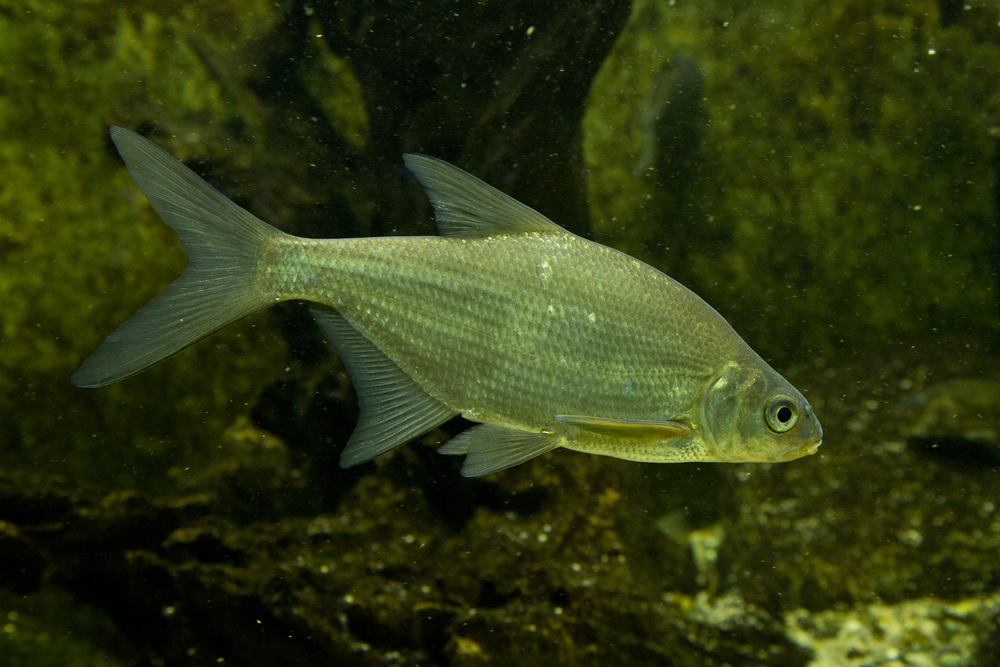
Large and flat, with a striking round shape, the white bream is a sight to behold. In contrast to its expansive body, this fish’s head looks comically small. This difference is highlighted by large, bulbous eyes.
True to its name, this bream turns to a bright, shiny shade of silver as it matures. This fish is known for its large scales that retain its color at all times.

